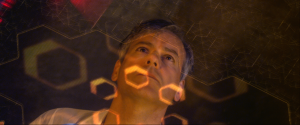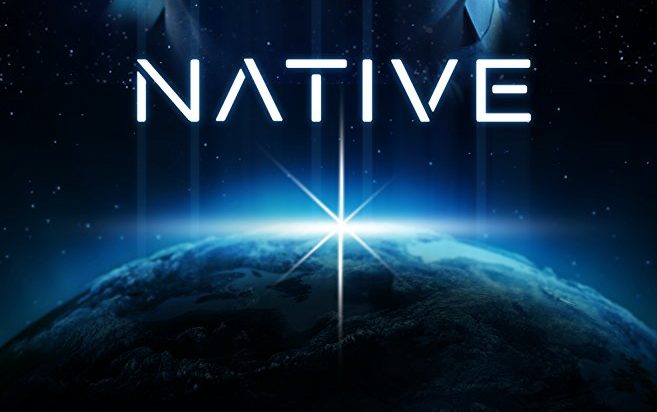Reviewed by Lee Hill
For an independent filmmaker, a first feature, without access to the near unlimited technical and financial resources of a major production entity or studio, is always a gamble. It is one thing for a new director and company to argue that “less is more”, but another thing entirely to pull off this aesthetic if one small, but significant aspect of the project misfires. It’s no surprise that a lot of first features are set in a contemporary present and deal with relationship problems. Sans big bucks, a savvy filmmaker just needs good actors, locations that evoke character and a crew that is technically experienced enough to get the sound and image right. However, it takes a filmmaker with a rare (and possibly crazy) mix of daring and ambition to take on certain genres – the historical epic, biopic, war film, or science fiction – and emerge with something visionary.

And there is plenty of visionary possibility in Native, even when its reach exceeds its grasp, thanks to a plot that reminds one of such writers as Isaac Asimov, AE Van Vogt and Alfred Bester and classic Outer Limits and Twilight Zone episodes. Following a complex series of tests and training, Cane (Rupert Graves) and Eva (Ellen Kendrick), two alien scientists with telepathic powers, are chosen to leave their home planet and journey across the stars to colonize a distant world. The distant and weak transmissions from this planet suggest it will be an ideal place for this advanced, but dying civilization to rejuvenate itself. However, as the space travelers move further across time and space, their telepathic connection to their home planet weakens and Cane begins to question the morality of the mission and the very meaning of their own existence in the isolation of deep space.

As my coy synopsis suggests, there is much to recommend about Native, but the film suffers from a troubling and hard to ignore flaw – the main set, the interior of intergalactic starship – looks like a set in the unforgiving digital lighting. In a theatrical setting, audiences would easily suspend their disbelief thanks to the claustrophobic tension of the narrative and Graves’ convincing shift from faithful voyager to a rebel, whose new self-awareness strikes his crew member as madness. Alas, no amount of post-production matte work and CGI imagery can disguise the fact that the actors spend a lot of their time running around a small set shot from different angles to look like a much bigger set. Played as black comedy, as John Carpenter and Dan O’Bannon did so memorably in their 1974 indie debut, Dark Star, such limitations can generate a subversive buzz. However, the limitations of the set, with its easily discerned fresh paint and wooden finish, takes the viewer out of the film to such an extent, that an intriguing twist in the film’s final ten minutes lacks the punch it should have.

At the risk of sounding as if I am damning Native with faint praise, give me the overreaching ambition of Fitzsimmons and his creative team any day over the glib proficiency of most studio s/fx heavy product. Marvel Films, for example, has not put a foot wrong exploiting the mainstream movie goer’s weakness for space opera plots and spandex. By contrast, Native is clearly on the side of the angels in terms of its influences and enigmatic plotting.
If the director and his collaborators are not successful at covering up the limitations of their modest budget, this was also a problem I had with Christopher Nolan’s debut, Following, and he made Memento next. Similarly, Stanley Kubrick’s debut, Fear and Desire, is of historical interest these days, but it soon led to Killer’s Kiss and The Killing. Film history is full of inauspicious beginnings and I sincerely believe Daniel Fitzsimmons is capable of bigger and better things with a more stable budget and production environment. To echo James Agee on the young Kubrick, there are too many good things in Native to dismiss it because of one clunky set.
Director: Daniel Fitzsimmons
Writers: Neil Atkinson, Daniel Fitzsimmons
Stars: Rupert Graves, Ellie Kendrick, Leanne Best
